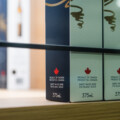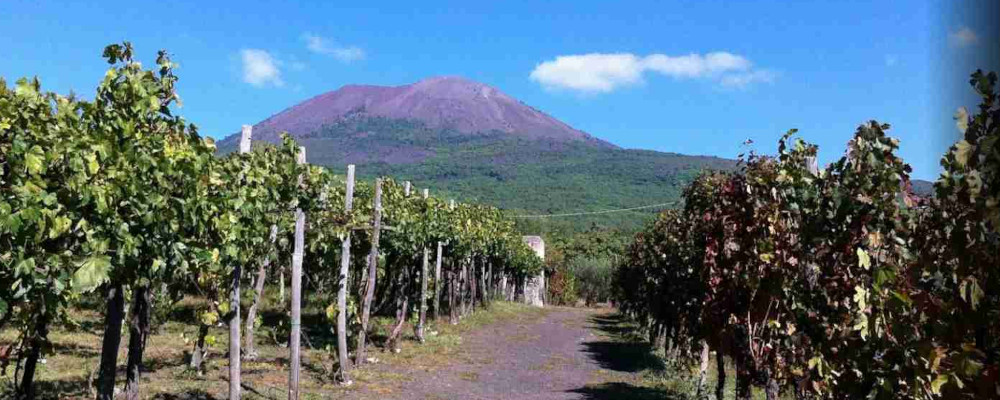Half-past eight on a Sunday night in Naples and I was given a seat with a view. Across the room at the Ristorante Umberto, in the upscale Chaia neighbourhood, was a table of four consisting of an older couple and a middle-aged one. I presumed it was a family dinner of some kind. All but the elder gentleman at the table had finished what was on their plates, but he was slowly and deliberately carving and stretching out pieces of his pizza with a knife and fork so that I could see the stretch and give of the dough and fresh buffalo mozzarella cheese. That, I thought, is what I am going to have.
The DOP pizza at Umberto is very good indeed and tastes even better than it looks. Naples is, of course, the birthplace of pizza and they take their pies seriously, accrediting the “authentic” ones with a Denominazione di Origine Protetta designation. On the whole, the typical foods of Naples and the surrounding Campania region make up a great deal of the greatest hits of Italian food, including the famous Neapolitan ragu of long-cooked meats in tomato sauce served over dried pasta from nearby Gragnano.
The tomatoes in Neapolitan sauce might be the famous San Marzo ones from just east of the south end of the Bay of Naples. Or, they might be less well known, at least outside of Naples, Piennolo variety. The Pomodorino Piennolo del Vesuvio is a ping-pong ball-sized fruit that only grows in the volcanic soils of Mount Vesuvius, which towers over Naples. The variety is revered for its depth of flavour and, harvested late, its unique ability to keep fresh through the Mediterranean winter.
The tomato plant is a vine, and if the volcanic soils of Vesuvius give vigour to the Piennolo, what’s their effect on vitas viniferas, the common grapevine? Pretty good, it turns out, at least historically. So explained Maria Paola Sorrentino from among a row of 200-year-old Falanghina vines on her family’s vineyard on the lower southwest slope of the volcano, Tenuta Sorrentino.
Vesuvius’ soils drain well and quickly, Sorrentino explained, causing the grape vine’s root system to go very deep to find moisture. This gives the vines of the Vesuvio DOC a stable supply of water over the hot Southern Italian summers. This is particularly relevant on the volcano because Mount Vesuvius is a National Park and viticultural practices are highly regulated to protect its unique biome, including a ban on irrigation.
The deep imprint of the Vesuvius vines affords another important advantage, though it is (thankfully) rarely necessary. Sorrentino explained that the vineyard we were standing on was completely destroyed in the great eruption of 1906. Though buried in lava and ash, the next spring the vines grew back from the roots. That the vines were there to grow back in the first place is its own volcanic soil story. Unlike most of Europe, vines planted at Vesuvius were impervious to the great phylloxera plague of the late 19th and early 20th centuries and did not have to be replanted with American rootstock.“A parasite that lives in the leaves and roots of the vine was the cause of the greatest winemaking plague recalled, marking a ‘before and after’ in the history of the wine world. The phylloxera was developed during the last quarter of the nineteenth and early twentieth century and had a wide impact on Europe and Spain. The cause was an insect, phylloxera vastratix (now known as dactylasphaera vitifoliae); a tiny aphid species which attaches in the leaves and roots of the vine, and sucks the plant sap. It multiplies very quickly and although the amount of sap each parasite sucks is very small collectively this has a huge effect.” https://www.entrevinosypagos.com/en/la-filoxera-la-mayor-plaga-de-la-vid/#:~:text=A%20parasite%20that%20lives%20in,impact%20on%20Europe%20and%20Spain.
At 200 meters above sea level, the property at Tenuta Sorrentino has a panoramic view of the Bay of Naples, looking north towards the city, and across at the mountains south of Sorrento and the Isle of Capri. The Sorrentino family has built a glass-walled dining room at their winery, that was filled with families having lunch on the Saturday I visited. Over a meal that included a simple pasta with Piennolo tomato sauce and buffalo mozzarella, we tried a number of the Sorrentino wines, made chiefly from the four main varieties grown in Vesuvius: Falanghina and Caprettone for white, and Piedirosso and Aglianico for red.
A subset of the Vesuvio DOC, Lacryma Christi del Vesuvio (meaning Christ’s tears), designates wines from grapes grown right on the mountain’s slopes. The Sorrentino Vigna Lapillo line denotes Lacyma Christi from the vineyard surrounding the winery. The Vigna Lapillo Bianco is a blend of 80 percent of Caprettone, which is only cultivated in 15 villages around Vesuvius. The rest is Falanghina, the light and crisp white grown throughout Campania. The Caprettone gave the wine depth, accentuated by eight months of resting on its lees in stainless steel.
The Vigna Lapillo Rosso also was made as a blend favouring the indigenous variety of Vesuvius: 80 percent Piedirosso, rounded out with Aglianico. It was a juicy Mediterranean red, mellowed in old oak with red to black fruit and herbal notes of macchia (a.k.a. garrigue). Even more than the white, the red evoked a taste of place, and one could imagine mysterious tectonic forces at work in the vineyard and cellar where it was made.
Production in the Vesuvio appellation is small and allotments for export are limited. Quality may also vary. The wines at Sorrentino cost about 15 Euro at the cellar door, so I expect would be closer to $30 if they made it across the Atlantic; double or more on a wine list.
Back in Naples, I sought out Lacryma Christi blends or single variety Piedirosso wines wherever we ate out and was rewarded every time. The local pride in the wines showed on the faces of our servers when our group ordered them. And when we left the restaurants, if we looked south, we could see exactly where they came from.
Ristorante Umberto’s website is: https://www.umberto.it/en/
Tentuta Sorrentino’s website is: https://www.sorrentinovini.com/
Recommended for You

Matthew Grills: Joey Chestnut is America

Malcolm Jolley: The comfort of familiar favourites—or the fun of finding new wines?

Malcolm Jolley: An ‘Elbows Up’ wine project everyone can get behind

Malcolm Jolley: Need some summer wines? Look no further than the food-friendly, low-sugar sippers of the sunny Southern Rhône




